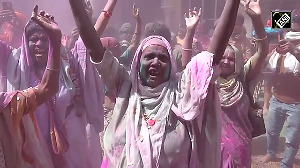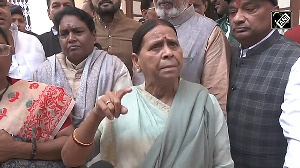

t's cash back time on your credit card. At least that's what the Citibank Cash Back Card says.
But the smile on your face won't last for long if you don't spend enough.
Let's take a look at what the Citibank Cash Back Card offers.
Paying bills
What's on offer
Five percent of your hospital bills and medical purchases will be returned to you as cash.
Three percent of your electricity, landline and mobile phone bills will be returned as cash.
The reality check
How often do you land yourself in hospital? Not every month (hopefully!). So don't get lured by the hospital bill part.
Great, if you spend a lot of money at the chemist, say Rs 5,000 a month. That should get you Rs 250 back (it's not much, but something is always better than nothing). Do ensure your drug store accepts credit cards (a number of chemists don't).
Great, if you pay your utility bills by card.
Cash advance
What's on offer
If you withdraw cash from the ATM, two percent of the amount you withdraw will be returned.
The reality check
ATM cash withdrawals on your credit card are charged a transaction fee depending on the type of card you use.
Let's say it is 2.5 percent of the amount withdrawn. You withdraw Rs 2,000 from your ATM and you get Rs 40 back but you pay Rs 50 as a transaction fee. So you end paying Rs 10 (instead of Rs 50), which is nice. But you don't make any money.
Avoid making cash withdrawals on your credit card. If you need cash urgently, use your ATM card or debit card. You don't pay a transaction fee on that.
Travelling abroad
What's on offer
If you are travelling abroad and withdraw cash from an ATM in another country, you get four percent back.
Make a purchase overseas on your card and you get two percent back.
The reality check
You will be charged a transaction fee on your cash withdrawal; the math done above applies here as well. The icing on the cake, though, is that four percent will be returned. Then again, how often do you travel abroad?
If you travel abroad often, then it is great because you will at least end up making a purchase on your card if not taking a cash advance.
If you make a purchase over the Internet in a currency other than the rupee, you will get two percent of the amount you paid back.
What if you are not interested in any of the above options?
What's on offer
You have no medical or utility bills, you're not interested in withdrawing cash and you're not making a trip abroad. Then you will get a flat one percent of the total amount you spend -- irrespective of where and on what you spend it -- returned to you.
Should you revolve the credit, the bank rewards you even more. After all, they are now making money on you.
(Revolving credit means you pay just five percent of your total bill and carry forward the rest of the amount to the next month and the bank charges you a rate of interest. This is also known as carry forward.)
If you carry forward upto Rs 1,000, the amount returned to you stays at one percent.
If you carry forward between Rs 1,001 and Rs 6,000, 1.15 percent of what you spent is returned to you.
If you carry forward more than Rs 6,000, it increases to 1.25 percent.
The reality check
If this tempts you, you are in acute danger of getting into a debt trap. No doubt, you can always say you are being rewarded for spending, but the amount you end up paying by way of interest will more than nullify the effect.
Take a look at the figures again -- the more you carry forward, the better the deal. That's because the more you carry forward, the more you pay by way of interest.
Tread cautiously!
The limits
You won't be able to benefit from this card if you use it as little as possible.
You need to have spent enough to get back Rs 250 (which basically means you need to spend a minimum of Rs 25,000) for this scheme to start working.
Let's say your spending falls in the one percent cash back category (as explained earlier). Keeping that in mind, take a look at this example.
Month 1: You spend Rs 3,500 so, according to this scheme, you should get Rs 35 back.
Cash Back: Rs 0.
Remember, the scheme is not yet working for you because you have not spent Rs 25,000 to get it kickstarted. But, don't worry. This does not mean you lose Rs 35.
Month 2: You spend Rs 32,000, You are entitled to Rs 320.
Cash Back: Rs 320 + Rs 35 (your cash back from the previous month) = Rs 355, which is credited into your account.
Month 3: You spend Rs 5,000. You are entitled to Rs 50.
Cash Back: Nil.
And so on, till what you have spent reached a total of Rs 25,000. Which is when you get Rs 250 back.
If you still do not manage to earn Rs 250 as cash back in one year, the scheme lapses. Which means you get nothing.
If you think you can go overboard and spend like there is no tomorrow, the bank is not going to kiss your feet. Their reward to you stops at Rs 20,000 per year. This works around to Rs 1,666 per month.
How to get the best out of this card
~ At all costs, try to avoid taking a cash advance (using it to make an ATM withdrawal).
~ Definitely steer clear of revolving credit.
~ Don't just spend because you want at least Rs 250 back.
If you find your spending does not really come in any of the specified slots (like bills, cash withdrawals, etc), you may just end up spending more.
For instance, assume you are only going to get one percent on your total spending. That means you will have to spend Rs 25,000 every month if you want to get Rs 250 every month. That is a huge amount.
~ If you spend a lot at the chemist, go to a hospital for periodic treatment, pay your cell phone bills with your card or travel abroad substantially, the Citibank Cash Back Card is an option worth considering.
Finally...
The truth is you do get cash back on whatever you spend on.
You may not like the way it is allocated but you can't really dictate terms when it comes to a freebie. All you can do is make it work for you.
The day you get into the trap of spending just to get some money back is the day it will work against you. And, once again, don't even consider revolving credit!
DON'T MISS!
Are you revolving on your credit card?
Want a free credit card?
Image: Dominic Xavier






 © 2025
© 2025